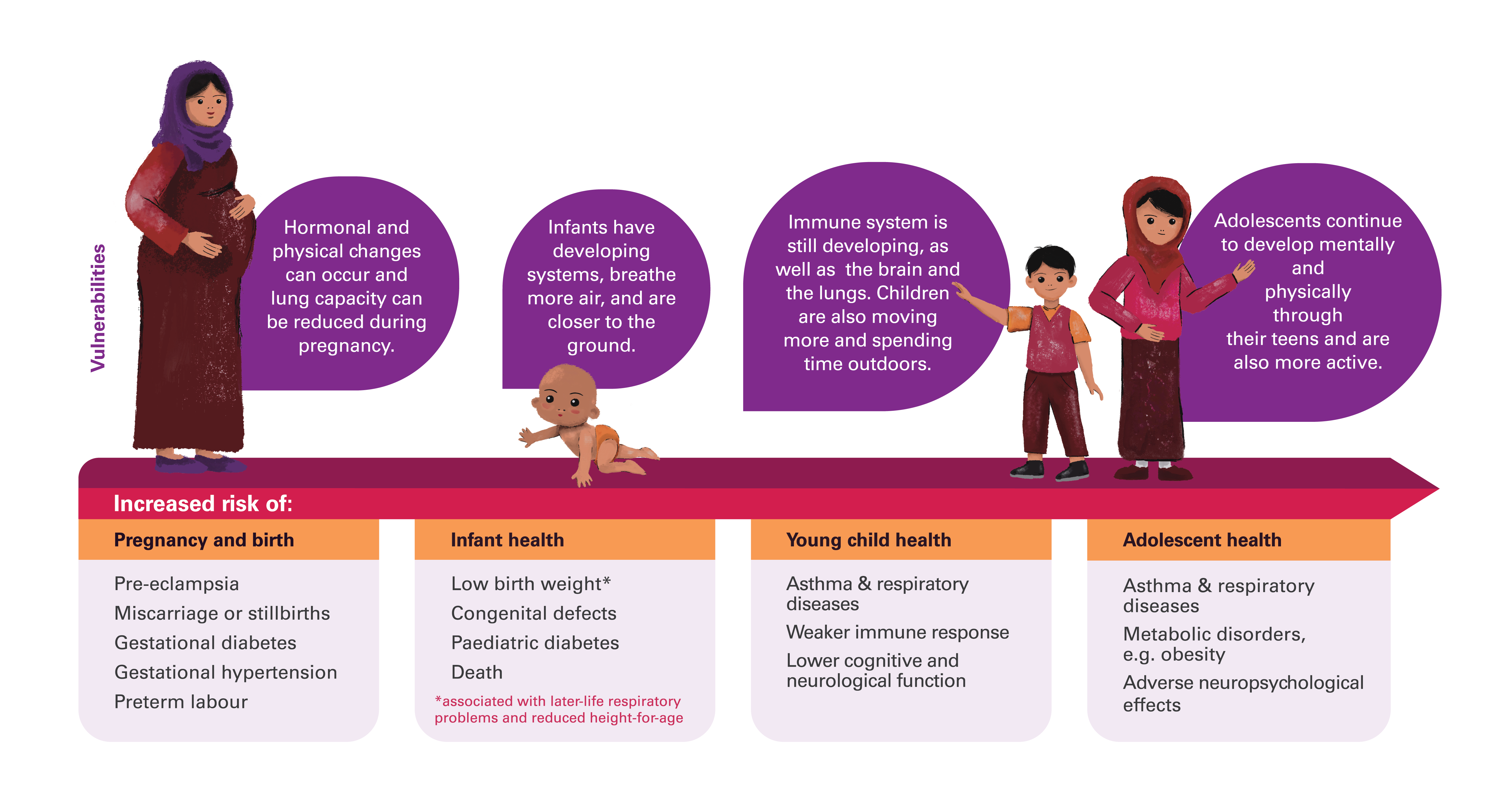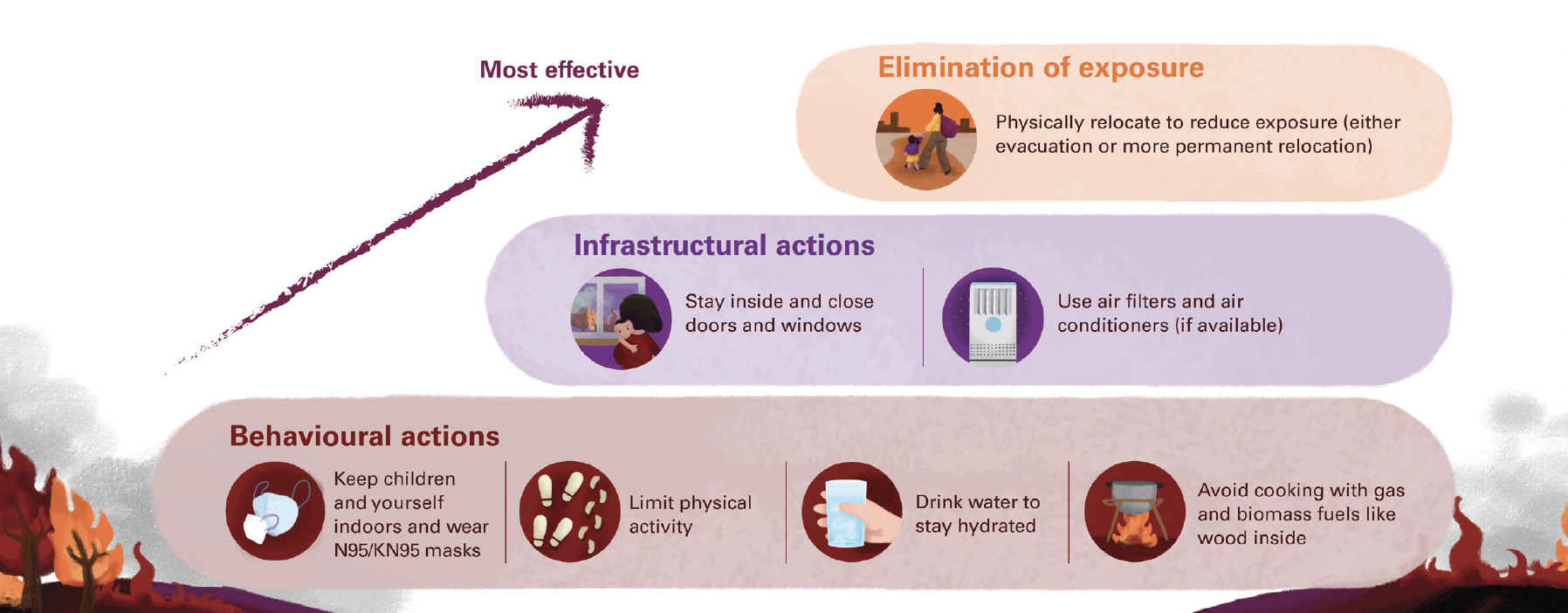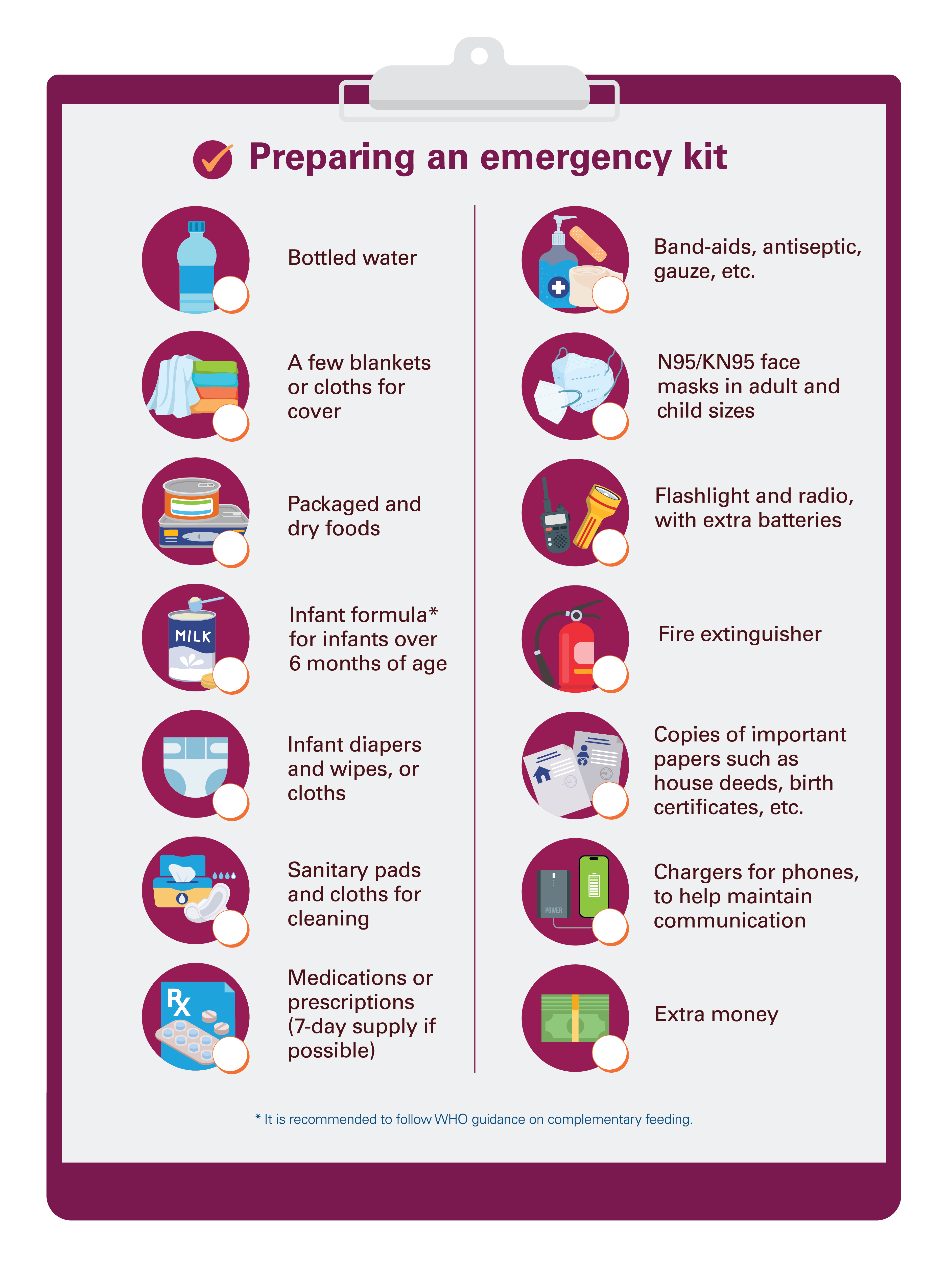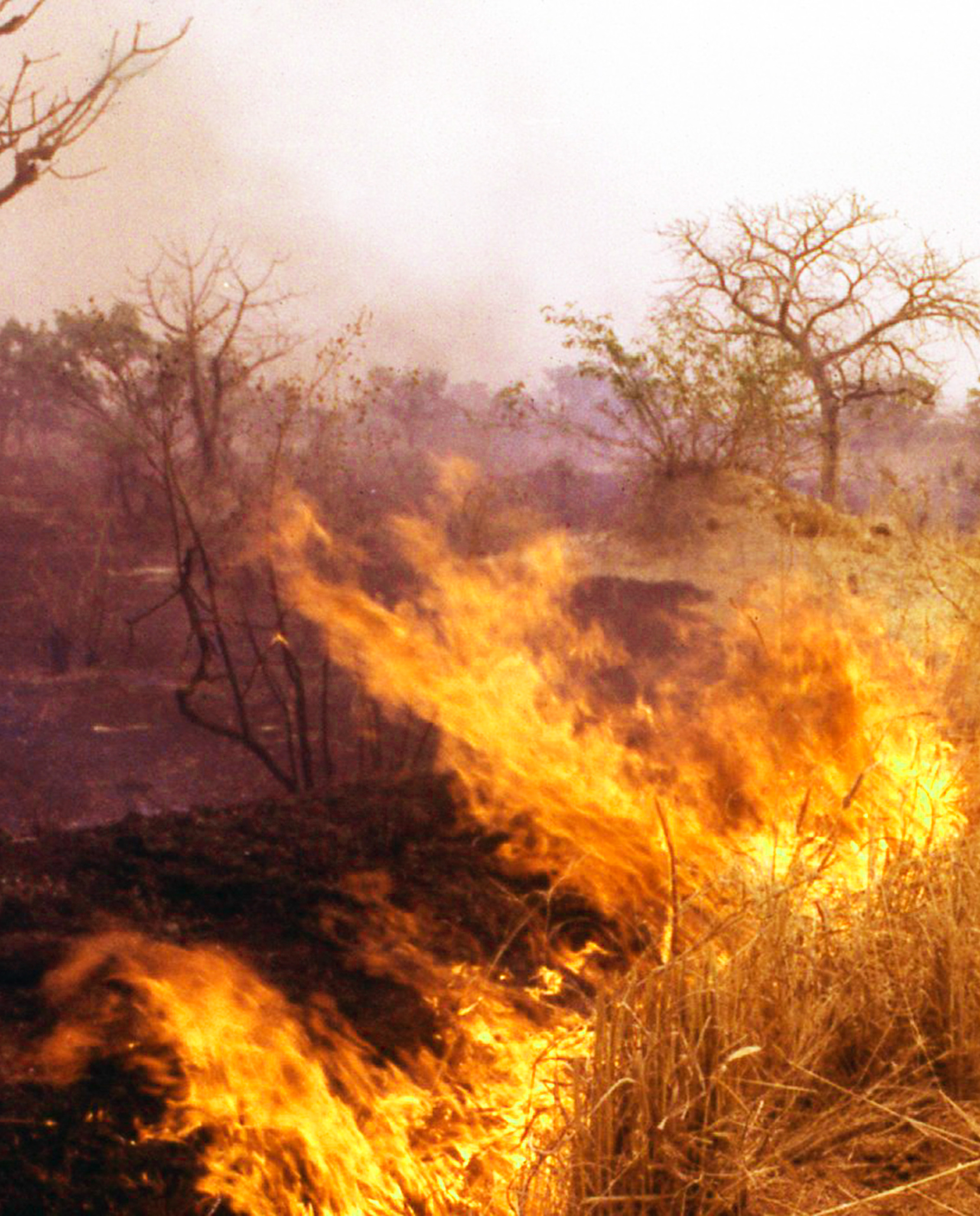Wildfire smoke
The problem
Climate change is associated with creating conditions such as increased drought, longer and more intense heatwaves, low relative humidity, dry lightning and strong winds, all contributing to hotter, drier and longer fire seasons. Dangerously, wildfire smoke can be deadly for young lungs. Exposure to wildfire smoke can be more hazardous than ambient air pollution alone. This is because wildfires release more particulate matter (PM) that is smaller in size than is found in ambient air. In fact, forest fire smoke is chiefly made up of PM2.5 micrometres in diameter or smaller..
Wildfires are projected to become more frequent and intense, with a global increase of extreme fires from current levels to 14 per cent more by 2030, 30 per cent more by the end of 2050 and 50 per cent more by the end of the century.
Fire-sourced particulate matter exposure is associated with an increased risk of child mortality. Each 1 μg/m3 increment of PM2.5 emanating from fires was associated with a 2.3 per cent increase in the risk of child mortality.
Compared to PM2.5 from other sources, PM2.5 released from wildfires has been found to be approximately 10 times more harmful to respiratory health, particularly in children.
The global mortality burden attributable to smoke from landscape fires, which includes many forms of burning, was estimated to be 677,745 deaths annually, with almost 270,000 of these deaths – approximately 40 per cent of the total – occurring in children younger than 5 years of age.
13.2
per cent
increase in the odds of preterm birth with each 1 microgram per cubic metre of air (μg/m3) increase in wildfire smoke PM2.5 across the trimester
Children's unique vulnerability
Infants are rapidly developing; in particular, their immune systems and lungs are undergoing considerable development. Infants also breathe more rapidly than adults and take in more air relative to their body weight. They also have less nasal deposition of particles, meaning that a higher proportion of particles can penetrate deeply into the lungs. Children exposed to wildfire smoke in utero are therefore likely to be more vulnerable to infections and disease, as well as at higher risk of any health consequences resulting from being born with congenital defects, particularly in the respiratory and nervous systems.
Health impacts on children

Global-level studies on the effect of wildfire-related air pollution on pregnancy outcomes are still sparse but evidence demonstrates that, while wildfire-sourced air pollution has overlapping health outcomes with those caused by ambient air pollution, the former has more serious consequences. Children and adolescents are also seen to develop health issues after early life exposure to wildfire smoke, albeit many of the associations are still in their nascent stages. A growing body of literature has connected exposure to PM to lower lung function in children, stunted physical growth and neurological and metabolic dysfunction. Early-life wildfire smoke exposure is associated with immune dysregulation and lung function decrements in adolescence.
Safe from Wildfire Smoke
This technical note endeavours to distil a wealth of research, guidance and tools, and synthesize a comprehensive understanding of the impact of wildfire smoke on children. It is intended for policymakers and implementers, and seeks to empower meaningful action that shields children from the harmful effects of wildfire smoke, supplementing existing guidance on air pollution.
Tips for caregivers
The following simple framework can be used by households and communities, with the recognition that each decision comes with its own limitations and challenges that need to be considered. For example, physically relocating will require resources and possible employment in the new locale. The effectiveness of keeping windows and doors closed will rely on how well the housing has been manufactured and whether indoor ventilation and filtration is adequate. Wearing a mask will not protect a child from pollutants such as gases, and it needs to be well fitted to be highly effective.

The following items are suggested for inclusion in an emergency kit for households in high-wildfire-risk zones. Some of these items may overlap with items required to deal with emergencies caused by other climate-related shocks such as extreme heat or floods.


During the dry season, wildfires burn in the savanna of Burkina Faso.